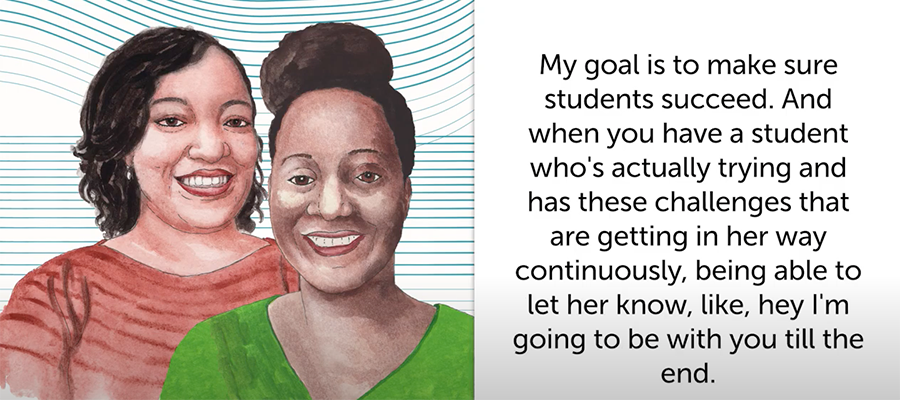 StoryCorps, a national nonprofit whose mission is to record, preserve and share the stories of Americans from all backgrounds, and Child Care Aware® of America (CCAoA) recently partnered on a project to interview child care providers. The providers were asked about their personal journey in the child care field and the impact of COVID-19 on their work and life.
StoryCorps, a national nonprofit whose mission is to record, preserve and share the stories of Americans from all backgrounds, and Child Care Aware® of America (CCAoA) recently partnered on a project to interview child care providers. The providers were asked about their personal journey in the child care field and the impact of COVID-19 on their work and life.
What follows is the transcript of a conversation between longtime friends Brittany Marks and Pamela Maxey. Marks talks about how she navigated child care for her son, both in her years as a young student, and more recently during the COVID-19 pandemic. Without nearby family to assist, she struggled to pay for school and child care and also make time for both.
Brittany: I first enrolled Bryce in a child care program when he was about three months old. I really started seeing the benefits of everything when I was in school. Just him being within a child care facility, they were able to pick up where I may have been falling short sometimes so that I didn't feel as though my son was suffering while I was pursuing my degree.
Pamela: How has a typical day changed for you since you've been dealing with COVID-19?
Brittany: With him being in first grade, it's definitely been a lot more chaotic. As parents, we always kind of wear a lot of hats, but it's like a whole lot of extra hats now—from waking up in the morning making breakfast for him, making sure that he's doing his assignments, then logging into my classes. Trying to work with a 6-year-old in virtual school in my living room while I'm teaching from another room in the house has been challenging. There's a lot of mommy guilt because I don't feel like I'm having the time with him that I used to.
But reflecting back to around the time when we met and how overwhelmed I was, I wasn't working. So spending over $8,000 in child care was unrealistic. They denied me a subsidy while pursuing a four-year degree. It was kind of hurtful because you're telling me that I have to lower my dream. I remember coming in your office crying a lot of times like, "I'm about to quit."
Even now with preparing to go back into the building, the first email that came out is, "Kids aren't allowed back during that time." And you're not considering single-parent households. And so it's like, what is the solution for when that comes up because I have to go to work. But where does my son go? You’re put in a place to choose between work that provides for your family and your child, who of course is the most important thing to you.
Pamela: I definitely remember when you would come into my office frustrated. I was always like, look, just breathe. We got this. And we would always have some type of solution. Whatever the issue was at that time, we were able to circumvent it somehow. My goal is to make sure students succeed. And when you have a student who's actually trying and has these challenges that are getting in her way continuously, being able to let her know, like, hey I'm going to be with you till the end. And that's what I did. I've actually learned a lot from you as well. So you coming into my life has been a blessing. And I'm glad that I've been able to do the same in yours.
Brittany: I've expressed to you I think millions of times how grateful I am for you. I don't believe that I would have received my bachelor's in the time that I did if it wasn't for you. So I do really appreciate you.
Pamela: I got you, girl.
The StoryCorps/CCAoA project was made possible with support from the Robert Wood Johnson Foundation.




